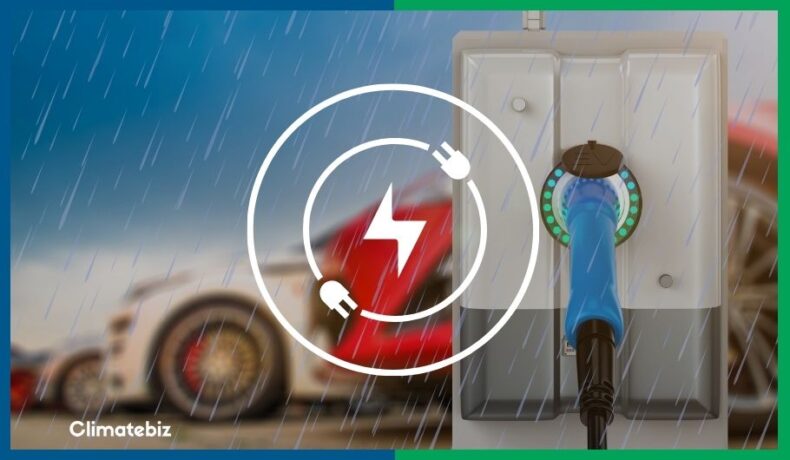Singing in the rain is nothing short of adventurous, but charging an EV in the rain, well, sounds a bit scary! We know that these vehicles can drive in the rain but is it possible for you to charge your EV in the rain?
Face it, at some point, you’re going to find yourself caught in the rain or perhaps even in a thunderstorm while driving, and as you know, your car will also most likely need a charge at some point on your trip.
Thankfully, the highly skilled researchers, engineers, and manufacturers working with electric cars foresaw this obstacle and came up with a few fantastic solutions for you!
From products themselves to the safety of your car, the topic of rain and charging your EV is well-researched! This article will give you the insight you need to safely charge your EV in the rain.
Table of Contents
Can I Connect My EV To A Charging Station In The Rain?
Big or small, long-range or run-around, Nissan Leaf or Tesla Model 3, X or Y, it doesn’t matter what you drive because the one thing you can’t control is the weather!
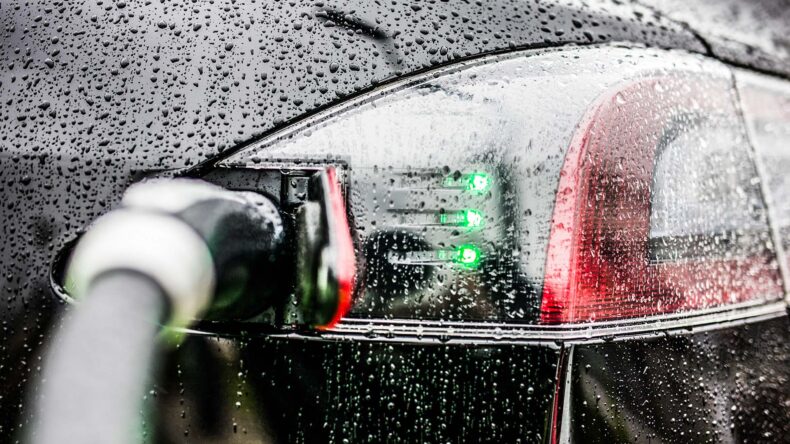
The great advantage of an electric car charger and the car is the ability to charge, come rain or shine!
When you charge an EV in the rain, you can get away with covering your plugs and cables with an umbrella or other types of covers.

In fact, there are a good few decent covers that protect your charging point from rain or shine.
These can be found on numerous online stores and sites such as Amazon.
A little drizzle shouldn’t affect your charging capabilities, and most products aren’t affected by adverse weather conditions.
Can I Charge My EV In Heavy Rain?
Now, what about charging in heavier rain?
You know, the type of rain that has you soaked from top to bottom, wishing you hadn’t chosen those pair of thick jeans today!
Will your car even detect that you’re trying to charge?
Worry not because EV manufacturers have specifically designed plugs to be sufficiently isolated from that terrestrial downpour.
You may also be surprised to know that your car is more intelligent than you initially thought. How? Keep reading to find out.
Is It Safe To Charge An EV In Rain?
To understand how an EV can safely charge in the rain, you must familiarize yourself with several factors.
These factors relate primarily to the protection level of the various parts that comprise a charging set-up (such as the plugs and the charging cable you’ve bought).
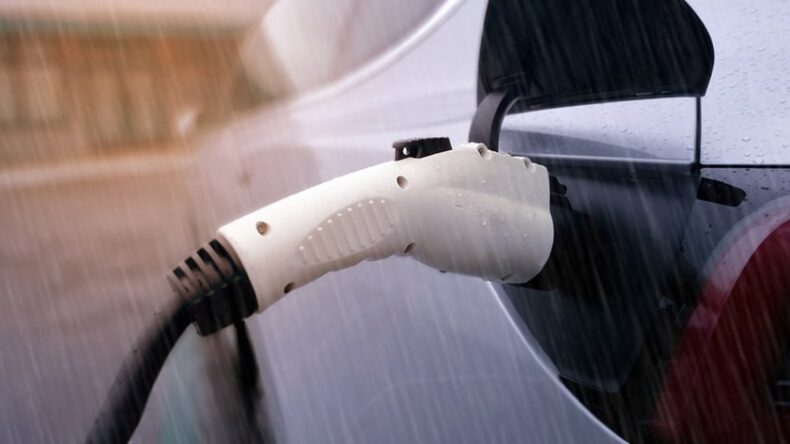
Ingress Protection Rating (IP Rating)
IP rating stands for Ingress Protection mark, Internal Protection mark, and in some areas, it’s referred to as the International Protection mark.
An IP rating indicates the ability of an object to resist numerous types of intrusion.
Intrusion, in this case, means the level of protection for the user’s hands or fingers from the product parts.
It also indicates the degree of protection an object has from dust and dirt. Finally, it shows the overall resistance an object has to moisture (such as rain and humidity).
Simply put, it indicates resistance to intrusion by the person using it, intrusion by foreign dust and dirt, and intrusion of moisture.
Countries use different types of IP rating code standards, but there is also an international one; these are as follows:
- BS EN 60529: 1992 in the United Kingdom.
- IEC Standard 60509: 1989 across Europe.
- EN 60529 internationally.
Understanding An IP Rating To Charge An EV In Rain
Generally speaking, an IP rating is made up of two digits.
The first digit indicates how well the object is protected from the user, dust, and dirt.
The second digit indicates the resistance of the object to moisture,
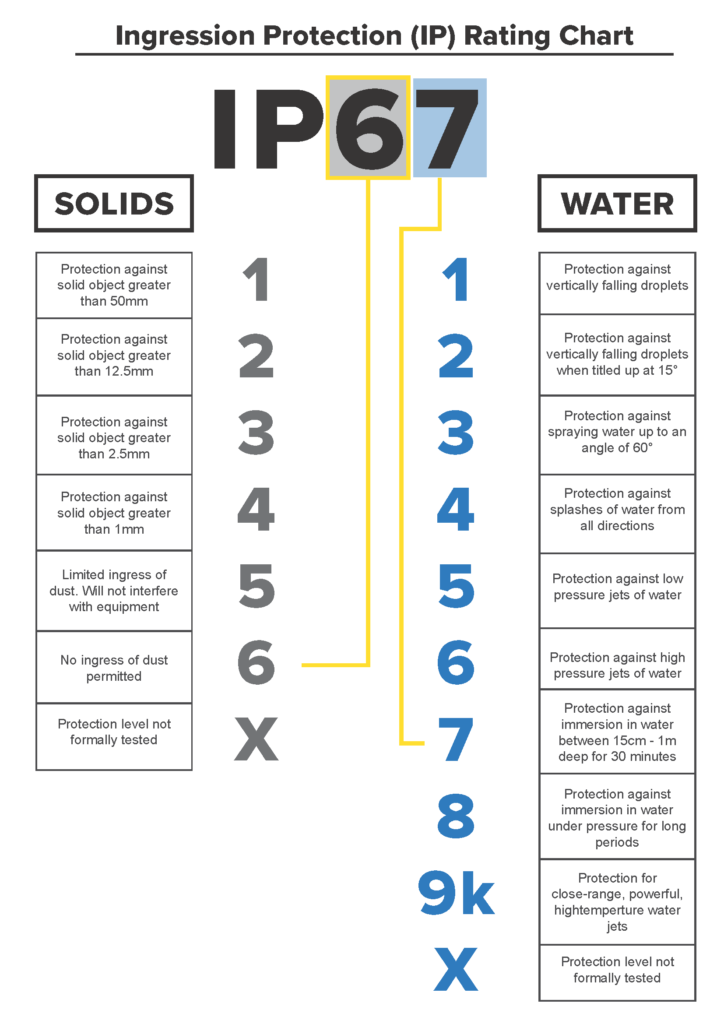
Source: Diamond HMI
What Makes An IP Rating Important To Charge An EV In Rain?
A universal IP rating provides users with a sense of trust and safety when using an electrical product in a particular environment. Much more so than just seeing the word “waterproof” stamped on a product.
If the components, such as the plugs, have a high IP rating, there is reduced risk when charging!
Pilot Circuit And Communication
An in-cable vehicle control box is a small device located between the power point and connection to your electric vehicle (either in the cable or at the charger point).
This magical block ensures information is being successfully communicated between the charging source and your EV.
By doing so, your EV can use its piloting capabilities to detect any problem with the power, and the safety features programmed into it will immediately kick in and cut the charge.
This charging protection mechanism looks out for your product and mitigates any other safety risks or concerns, such as shocks or surges.
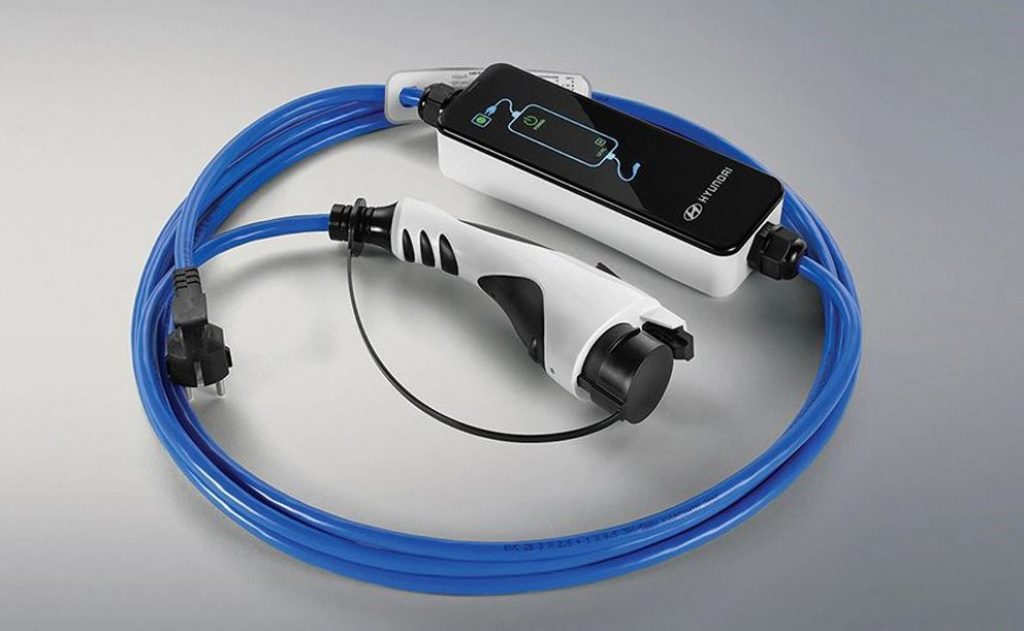
Source: Naver Post
Is It Safe To Charge An Electric Car In A Thunderstorm?
When you think of charging in a thunderstorm, the first thing that tends to come to mind is an image of you with your hair standing up, surrounded by a cloud of smoke.
The good news is that there are extensive standards that aim to prevent that from ever happening!
Product Safety Standards
Thankfully, the National Electric Code (NEC) has stipulated several standards concerning the “safe electrical design, installation, and inspection to protect people and property from electrical hazards.”
So basically, your EV charger is pretty darn safe!
Electric vehicle chargers include an electrical installation, so they must meet a few standards and certifications.
These include:
- The Federal Communication Commission Certification
- The International Electrotechnical Commission Certification
- The Underwriter Laboratories Certification (this one contains months of testing in a certified lab)
- The Negative Temperature Coefficient Thermistors at the Power Cord and Coupler (this one protects against abnormal and crazy currents!)
Ground Monitoring
Ground monitoring when charging an EV in the rain (or storm) is a non-negotiable!
It is mission-critical that your car charger provides an earth (or grounding) connection to the EV. What does this mean?
In simple terms, the charger must be equipped to monitor the ground continuity to immediately prevent your vehicle from receiving any charge if there is no earthing of the current.
This is precisely the same concept as earthing the electrical connection in your household!
Are EV Chargers Waterproof?
According to the University of Illinois, the correct plugging and charging cords and a good quality charging device are designed to be adequately insulated and waterproofed.
The university also states that the waterproofing capability is extensively tested for just about any weather conditions.
In other words, the certified equipment is waterproof!
It’s important to note that this doesn’t relate to extreme weather events like monsoon weather or hurricanes.
In saying that, you really shouldn’t be on the road in unsafe conditions in any case.
Final Thoughts
Many of you reading this have had the notion of “electricity and water do not mix!” drilled into your mind since childhood.
Well, you can disregard this idea when it comes to electric cars.
Charging equipment faces numerous tests and certifications and must be of a high standard! Even better, you can find the protection rating for each component on the equipment, allowing you a doubled sense of security.
And just to put your mind at ease a little more, your EV has your back with its piloting system, which will cut off charging if it detects even a tiny sign of abnormality.
But nothing is entirely fail-proof, and it goes without saying that if conditions seem bad, always take the cautious route and charge when it is safe to do so!
If you want to share your thoughts or ask us a question, please feel free to reach out to us in the comments section below! Alternatively, visit our forum and share your opinions with us!

